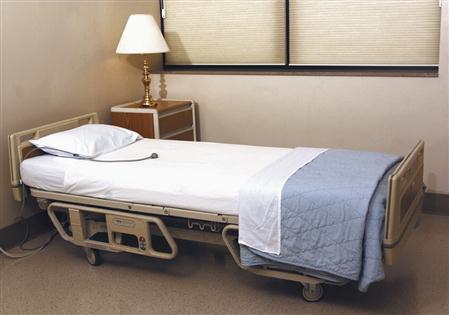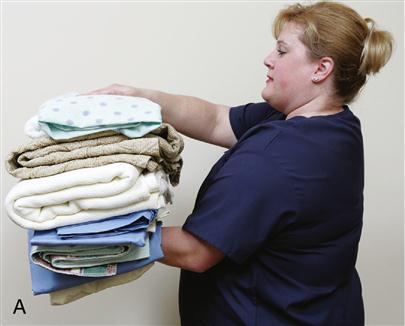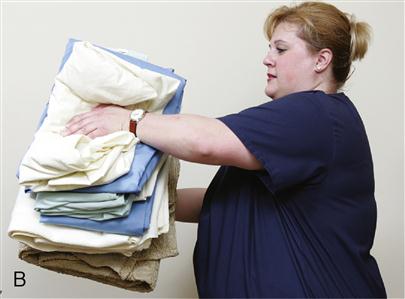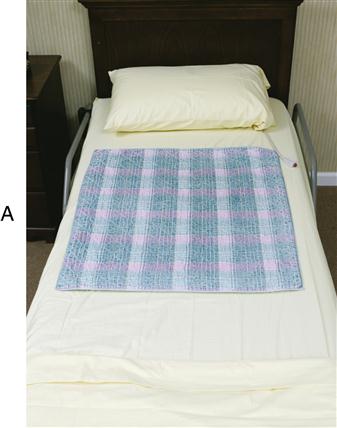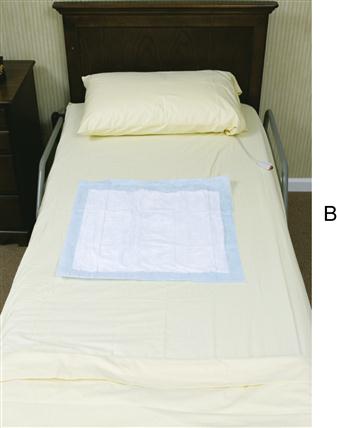Bedmaking
Objectives
• Define the key terms listed in this chapter.
• Describe open, closed, occupied, and surgical beds.
• Explain when to change linens.
• Explain how to use drawsheets.
• Handle linens following the rules of medical asepsis.
• Perform the procedures described in this chapter.
Key terms
cotton drawsheet A drawsheet made of cotton; it helps keep the mattress and bottom linens clean
drawsheet A small sheet placed over the middle of the bottom sheet
waterproof drawsheet A drawsheet made of plastic, rubber, or absorbent material used to protect the mattress and bottom linens from dampness and soiling
Most residents are up during the day. Some are always in bed. Food, fluid, hygiene, and elimination needs are met while in bed. Some persons are incontinent of urine or feces. Clean, dry, wrinkle-free linens are important for all residents to:
Beds are made every day. They are usually made in the morning after baths. Or they are made while the person is in the chair or out of the room. Beds are made and rooms straightened before visitors arrive.
• Straighten linens whenever loose or wrinkled.
• Straighten loose or wrinkled linens at bedtime.
• Check for and remove food and crumbs after meals.
• Check linens for dentures, eyeglasses, hearing aids, sharp objects, and other items.
• Change linens whenever they become wet, soiled, or damp.
Types of beds
• A closed bed is not used until bedtime (Fig. 19-1). Or the bed is ready for a new resident. Top linens are not folded back.
• An open bed is in use. Top linens are fan-folded back so the person can get into bed. A closed bed becomes an open bed by fan-folding back the top linens (Fig. 19-2).
• An occupied bed is made with the person in it (Fig. 19-3).
• A surgical bed is made to transfer a person from a stretcher (Fig. 19-4). This bed also is made for persons who arrive by ambulance.
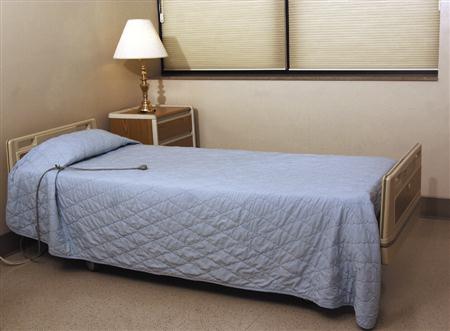
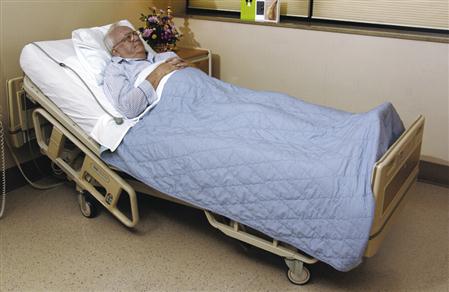
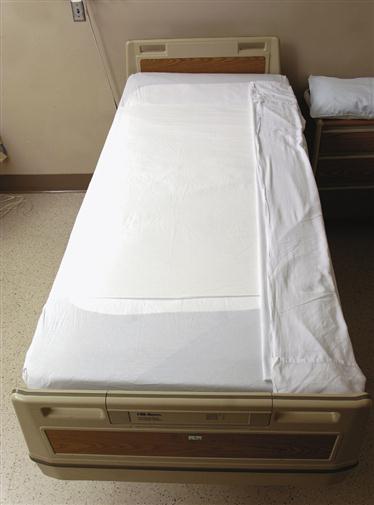
Linens
In nursing centers, linens are not changed every day. The center is the person’s home. People do not change linens every day at home. A complete linen change is usually done on the person’s bath day. This may be once or twice a week. Pillowcases, top and bottom sheets, and drawsheets (if used) are changed twice a week. Linens are always changed if wet, damp, soiled, or very wrinkled.
Handling linens
When handling linens and making beds, practice medical asepsis. Your uniform is considered dirty. Always hold linens away from your body and uniform. Never shake linens. Shaking spreads microbes. Place clean linens on a clean surface. Never put clean or dirty linens on the floor.
Collect enough linens. If the person has two pillows, get two pillowcases. The person may need extra blankets for warmth. Do not bring unneeded linens to a person’s room. Once in the person’s room, extra linen is considered contaminated. Do not use it for another person.
Collect linens in the order you will use them:
• Bottom sheet (flat or fitted)
• Waterproof drawsheet or waterproof pad (if needed)
• Cotton drawsheet (if needed)
• Blanket
Use one arm to hold the linens. Use your other hand to pick them up. The first item to use is at the bottom of your stack. (You picked up the mattress pad first. It is at the bottom. The bath blanket is on top.) You need the mattress pad first. To get it on top, place your arm over the bath blanket. Then turn the stack over onto the arm on the bath blanket (Fig. 19-5). The arm that held the linens is now free. Place the clean linen on a clean surface.
Remove dirty linen one piece at a time. Roll each piece away from you. The side that touched the person is inside the roll and away from you (Fig. 19-6).
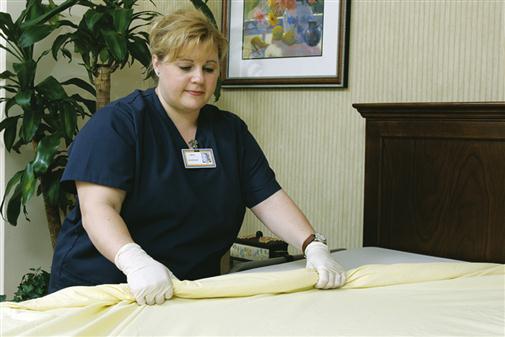
Drawsheets
A drawsheet is a small sheet placed over the middle of the bottom sheet.
The cotton drawsheet protects the person from contact with plastic or rubber and absorbs moisture. However, discomfort and skin breakdown may occur. Plastic and rubber retain heat. Waterproof drawsheets are hard to keep tight and wrinkle-free. Many centers use incontinence products (Chapter 22) to keep the person and linens dry. Others use waterproof pads or disposable bed protectors (Fig. 19-7).
Cotton drawsheets are often used without waterproof drawsheets. Plastic-covered mattresses cause some persons to perspire heavily. This causes discomfort. A cotton drawsheet reduces heat retention and absorbs moisture. Cotton drawsheets are often used as assist devices to move and transfer persons in bed (Chapter 17). If used as an assist device, do not tuck it in at the sides.
The procedures that follow include waterproof and cotton drawsheets. This is so you learn how to use them. Ask the nurse about the type used in your center.
Making beds
Safety and medical asepsis are important for bedmaking. Follow the rules in Box 19-1.
See Delegation Guidelines: Making Beds.
See Promoting Safety and Comfort: Making Beds.
See Teamwork and Time Management: Making Beds.

